Air and Missile Defence

(MEADS Air and Missile Defence system)
Abstract
Induction of new technologies has dramatically impacted the 21th century battlefield. Many previous ideas and concepts are being revised, reassessed or even being abandoned altogether. Significant increase in the precision, range and lethality of indirect fires, proliferation of highly capable cruise and ballistic missiles, affordability of destructive air power, coupled with ever more capable ISTAR complexes (intelligence, surveillance, target acquisition and reconnaissance) leveraging ubiquitous availability of sensors has made Force Protection an extremely difficult and challenging endeavour. As the most prominent aspect of Force Protection, In today’s operational environment the importance of Air and Missile defence cannot be overstated. This article analyses the Bangladesh Army’s need for Air and Missile defence and recommends course of action.
Introduction
In the strategic context of Bangladesh Armed Forces, due to lack of sufficient numbers of modern 4th gen fighter interceptors in the fleet, significant gap and lack of balance in air power prevails between BAF and other regional Air Forces. Making joint Active Air and Missile Defence, the primary viable mean of effective defensive counterair in the short to medium term. Moreover in the long term, when it comes to fighting a conventionally and numerically superior adversary against whom Air superiority cannot be achieved, Active Air and Missile Defence (AMD) capabilities will become the lifeline of the friendly formations.
And today for the Army specifically, to ensure Force Protection against traditional fixed and rotary wing threats, cruise and ballistic missiles, as well as to address the increasing RAM and UAS hazards on the battlefield, adequate Air and Missile defence is imperative.
Definitions
Defensive Counterair: defensive measures designed to detect, identify, intercept, and destroy or negate enemy forces attempting to penetrate or attack through friendly airspace.
Force Protection: Measures and means to minimize the vulnerability of personnel, facilities, equipment, materiel, operations, and activities from threats and hazards in order to preserve freedom of action and operational effectiveness thereby contributing to mission success.(AJP 3.14)
Air and Missile Defence (AMD) is the most prominent part of it. It is defined as the direct active and passive defensive actions taken to destroy, nullify, or reduce the effectiveness of hostile air and ballistic missile threats against friendly forces and assets. (JP 3-01)
Active AMD: Active AMD is direct defensive actions taken to destroy, nullify, or reduce the effectiveness of hostile air and BM threats against friendly forces and assets. Active AMD includes AD and ballistic missile defence (BMD).
AD: AD is defensive measures designed to destroy attacking aircraft and aerodynamic missiles, or to nullify or reduce the effectiveness of such attack. It includes the use of aircraft, SAMs, antiaircraft artillery (AAA), CO, EW (including directed energy), multiple sensors, and other available weapons/capabilities. AD includes defence against CMs and UASs.
BMD: BMD is defensive measures designed to destroy attacking enemy BMs, or to nullify or reduce the effectiveness of such attack. Integration of BMD systems will allow for a defence in depth, with the potential for multiple engagements that increase the probability for success. (JP 3-01)
Though not included in the definition of active AMD operations, counter-rocket, artillery, and mortar (C-RAM) is a fundamental part of active AMD. C-RAM operations are defensive measures to destroy, nullify, or reduce the effectiveness of rocket, artillery, and mortar (RAM) threats. For, simplicity sake, air, ballistic, and RAM threats are generally referred to as “air and missile threats” hereafter. (FM 3-01)
Passive AMD. Passive AMD is all measures, other than active AMD, taken to minimize the effectiveness of hostile air and BM threats against friendly forces and assets. These measures include detection, warning, camouflage, concealment, deception, dispersion, hardening, and the use of protective construction.
As mentioned above, active AMD is embedded in the defensive counterair portion of the joint counterair operational framework.(JP 3-01)
Bangladesh Army’s Active Air Defence capability requirement.
Current Air Defence Doctrine of Bangladesh limits Army’s Air Defence capabilities to MRSAM class. Only Bangladesh Air Force can procure and possess missiles beyond 30 km.1 Thus, it effectively puts long range AD and BMD within operational responsibilities of BAF. Hence for Army’s active AD, we will focus on MRSAM, VSHORAD/MANPADS and C-RAM capabilities in this article.
Currently, Bangladesh army has 43rd and 44rd SHORAD Regiments equipped with Chinese FM-90 short range Air defence systems.2 Additionally, Army has one battery of operational Oerlikon Skyguard® 3 VSHORAD. Commissioned with Adhoc 48 Air Defence (AD) Regiment Artillery.3 Another battery is presumably on order. Apart from that, Army has procured two batteries of CS/AA3 system that are in commission with Adhoc 57 Air Defence (AD) Regiment Artillery.4
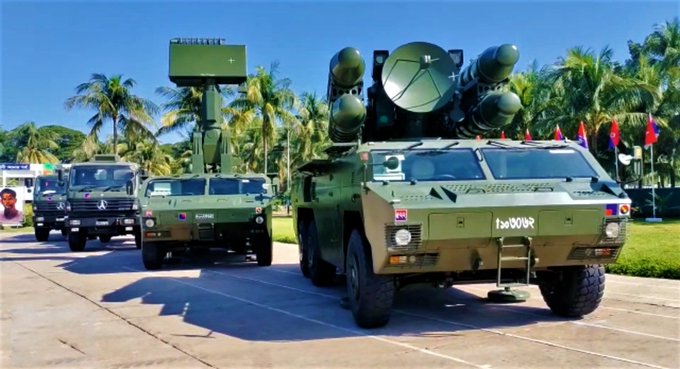
(Bangladesh Army Air Defence Artillery FM-90)
However, these numbers are not nearly enough to conduct sufficient active air and missile defence operation to protect all ten Divisional formations and critical assets of Bangladesh Army in a full fledged conflict. Due to budgetary constraints and political reasons army has a tendency to buy a very small numbers of state of art weapons to declare modernization and then move on. Such as, Oerlikon Skyguard 3 VSHORAD can be considered best in its class, however, just one or two batteries are going to have very little effect in a large conventional ground combat operation. Army must extensively prioritize Air defence Artillery modernisation as it did with amor and mechanised infantry modernisation in the previous decade. (For reference, from 2011 to 2020 Army has procured 500+ APCs and MRAPs. Extensively modernised its existing tank fleet and procured two regiments of new state of the art tanks. MBT-2000 and VT-5).
MRSAM requirement
Russo-Ukraine conflict has widely demonstrated that, to effectively combat enemy cruise missile, medium and large UAS/UCAS, fixed & rotary wing threats in order to protect friendly formations and critical assets, state of art area defence capable MRSAM systems are crucial. Western supplied MRSAM systems such as NASAMS and IRIS-T SLM has shown remarkable performance.5 One NASAMS unit has reportedly shot down more than 250 targets alone.6
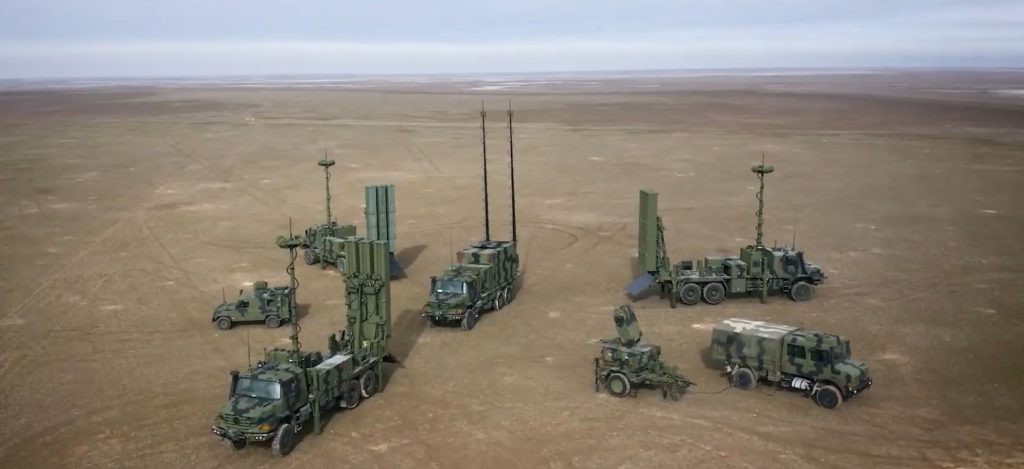
(HISAR O+)
So far Army lacks any MRSAM system in active service. However, recently it appears under the MRSAM evaluation process the service has taken steps in the right direction.7 It has been reported that Army has ordered HISAR O+ MRSAM from Türkiye in 2021 under a billion dollars contract.8 We highly recommend Army continue its MRSAM purchases in batches. It must raise at least 4x MRSAM Regiments by 2030 and 8x by 2035.
VSHORAD/MANPADS requirement
MANPADS is an integrated part of maneuverer formation’s air defence. Currently Bangladesh Army operates several types of MANPADS. Including FN-16, QW-2 & recently procured more advanced QW-18A. Additionally, Army has taken initiative to manufacture MANPADS locally and open a domestic production line within BOF to fulfil future requirement. However, it should be treated with caution.9 Previously, a similar attempt in mid 2010s with local assembly of FN-16 has failed. But if this one were to succeed, it would require extensive cooperation and successful ToT from International security partners. This project, if realised, will not only enhance the domestic defence industry and build local expertise, but will also offer flexibility in procurement and help to save foreign currencies. Alternatively, if this fails to deliver, army should have contingency plan to procure MANPADS off the shelf in sufficient numbers for future requirement.

(Roketsan Sungur MANPADS)
C-UAS and C-RAM requirements
C-UAS: Today proliferation of small unmanned areal systems (UAS) has evolved into a much more significant and dynamic threat than it was previously anticipated. Ukraine conflict is demonstrating how small, cheap (and mostly) commercial drones are procured in tens of thousands and fielded with platoon and even done to squad level formations. These are creating unprecedented sensor density and offering dramatic localised situational awareness to the smallest units. Something like that was almost unthinkable just two decades ago. To make it worse, these quadcopter, Octocopter, and FPV UAS has been increasingly adopted and modified to carry Grenades and small ammunitions. And they are accurately hitting entrenched positions, infantry and armoured vehicles.10 Which has become a major problem for force protection.
Additionally, more sophisticated and capable purpose-built loitering ammunitions like Switchblade-600 and Lancet-3 with longer range, endurance and higher lethality are being extensively used against soft and armoured targets to a great effect. Moreover, high-end version of these loitering ammunitions like Israeli Harop, with more payload, hours of endurance and ability to traverse hundreds of km has been able to hit high value targets (HVT) throughout the adversary’s operational depth, as seen in 2020 Nagarno-Karabakh war and ongoing Ukraine-Russia conflict.11
Last but not the least, tactical UAVs like Russian Orlan-10 and Ukrainian Shark are greatly enhancing the field commander’s situational awareness by providing persistence ISR throughout the depth and breadth of the battlefield. These systems are cost effective and easy to produce in numbers, thus attritable. Consequentially, this class of UAV along with smaller ones has become a significant force multiplier for the traditional Artillery, enabling a highly devastating Reconnaissance-strike-complex (RSC) by providing target acquisition with unprecedented scale and accuracy.12
Even though these are yet to pick up on trends fully in South Asia, it would be wrong to assume that other regional armed forces would fail to keep up with the unprecedented changes that are taking place today. Indian army has already began investing gradually in small indigenous UAS and loitering ammunitions. Previously IAF bought undisclosed numbers of Harop loitering ammunition from Israel.13
Soon Bangladesh Army’s Air defence Artillery will need to address these newly emerging threats. Although, there is No doubt EW will play a large role in defending against these, nevertheless kinetic interceptors are essential. However, Recent conflicts in Ukraine and Nagarno-karabakh has demonstrated the inability of traditional Air defence systems (even the advanced ones) to adequately address the threat posed by small UAVs and loitering ammunitions. Even without taking into account the difficulties to detect, track and identify these threats due to their small RCS and very low IR signature, a very simple cost-benefit analysis will show the serious inefficiency of traditional of defence systems. A short range interceptor or MANPADS cost higher than these UAS. For comparison, loitering ammunitions like Lancet or Orlan-10 type UAVs only cost around $35k-100k. Let alone smaller quadcopters and FPV UAS, which costs much less. Usually between $1000-10k. On the other hand, an FIM-92 Stinger MANPADS reportedly costing up to $400k today.
Although world leading armed forces are seeking solutions to this problem in next generation directed energy weapons, those are at least a decade away from being fielded in large numbers. Besides, with the limited budget it has, Army is unlikely to get its hand on such high-end laser weapon systems in sufficient numbers. Alternatively, cold war Era concept of radar guided AAA guns are getting renewed attention. These VSHOARAD are cost effective when dealing with emerging UAS and loitering ammunitions threats. Ukraine has used and continue to use its large numbers of donated Gepard SPAAG to a great effect against shahed-136 and other Russian UAS.14
C-RAM: As discussed above, the ubiquitous availability of highly attritable and high-fidelity surveillance and reconnaissance assets, from electronic and multispectral sensing, to video feeds from UAVs, leaves little room to hide.
Even though it is rare that any one weapon or technology will alter the totality of the battlefield, as results are dependent upon so many different factors that defy effective centralised control, the M270 Multiple Launch Rocket System (MLRS) and M142 High Mobility Artillery Rocket System (HIMARS) provided to Ukraine have disrupted this trend and decisively shaped the battlefield by engaging Russia’s logistics, command and control(C2) nodes, and troop concentrations through much of the Russian Armed Force’s (RuAF) operational depth. This has prevented the RuAF from concentrating and massing artillery fire in a way that the Armed Forces of Ukraine (AFU) could not match, disrupted RuAF attempts to concentrate forces for offensives, and made command of Russian units a risky endeavour. Without the above effects, the AFU would have suffered significantly greater casualties and setbacks. The value of GMLRS is best understood through a combination of software, hardware and tactics.15
Additionally, AFU used US supplied Exculiber 155mm high precision round to strike Russian HVT in the rear. These tube and Rocket artillery capabilities are being continuously improved.
In potential future conflicts, competent adversary can leverage long range precision IDF to similar effects against Bangladesh Army through robust kill chain and capable Reconnaissance-strike complex. Evidently, there is no sanctuary in modern warfare. The enemy can strike throughout operational depth. Dispersion and concealment of ammunitions stocks, command and control (C2) nodes are critical to its survivability, nevertheless active C-RAM capability is imperative.
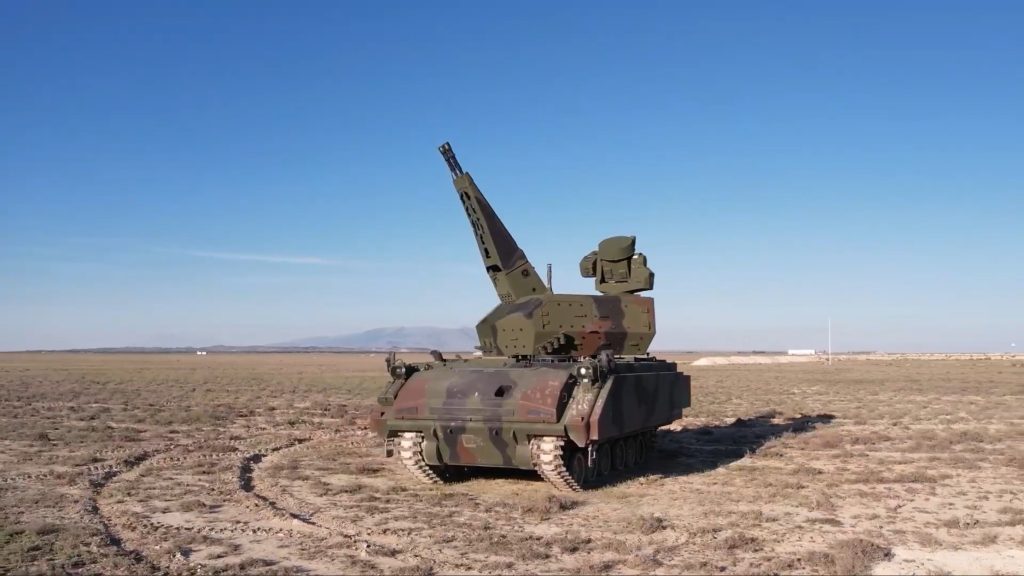
(Aselsan Korkut SPAAG)
Today’s New generation Self propelled AAA guns meets the requirements and provide effective solution to C-UAS and C-RAM as it combines both capabilities in a single system. For example, Reinmetall Skyranger-35 and Aselsan Korkut. (C-RAM capability for the later is still in development) Additionally, these systems have excellent utility against Cruise missiles and other areal threats in point defence role.
Even though Bangladesh Army has already bought Skygaurd 3 Air defence system from Reinmetall, it is unlikely to afford something expensive as Skyranger-35. However, Aselsan Korkut is more cost effective and may offer a better solution to the Army. The service must look to procure 20x systems in class by 2035.
Air and Missile Defence integration requirement.
Proper integration within service and between services is crucial to the operational success of Air and Missile defence. Integration maximizes the capabilities of individual systems and compensate for its vulnerabilities by combining different sensors, interceptors and decision makers into a single network enabled redundant architecture. Each system having access to the combined air picture allows Early Warning, better readiness, and efficient engagement of threats.
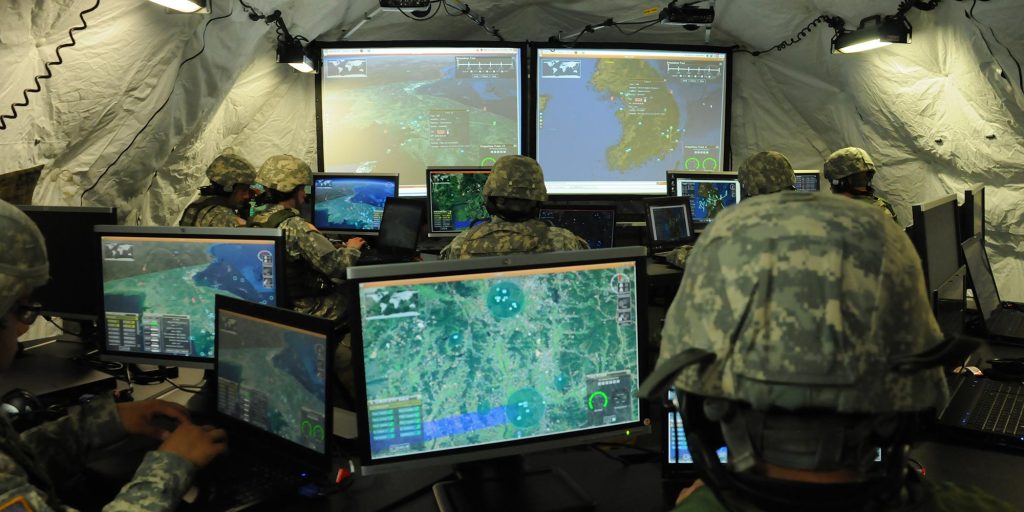
As of now Bangladesh Army lacks any initiative of its own to integrate its sensors. However, BAF has previously initiated a project for its own air and missile defence’s system integration. The system manufactured by Artemis from UK has entered service this year. It is expected to support multiple protocols. that means the system will have the capability to integrate equipments from different manufactures.16 Though, BAF has procured only one system so far.
Army’s recent Re-evaluation of Local Warning Radar (LWR) notice suggest that, the service is looking for within and inter service integration of its air defence assets.17 To facilitate smooth joint integration, Army may look to procure the same system as BAF. And both services should look to procure multiple of them to gain operational flexibility and ensure redundancy and survivability.
EW capability requirement
Russo-Ukraine war has seen widespread employment of Electronic Warfare capabilities in both offensive and defensive actions. EW has proven to be the most effective and primary mean to counter small UAS. Reportedly, Russian EW capabilities several months into the conflict has been able to knock out 90% of Ukrainian UAS.18
Similarly, it has demonstrated high performance against US supplied precision weapons such as Excalibur, HIMARS and JDAM.
By the second year, according to a senior Ukrainian military official. “everything ended: the Russians deployed electronic warfare, disabled satellite signals, and HIMARS became completely ineffective, this ineffectiveness led to the point where a very expensive shell was used” increasingly to strike lower-priority targets. Though Kyiv still considers its HIMARS rockets valuable, but Russian jamming can cause them to miss a target by 50 feet or more. “When it’s, for example, a pontoon bridge … but there’s a 10-meter deviation, it ends up in the water,” another Ukrainian official said.
A battalion commander, speaking on the condition of anonymity because he was not authorized to do so publicly, described flying a reconnaissance drone in foggy conditions last year in Bakhmut to track a HIMARS strike on a Russian position. On his screen, the commander watched in dismay as each rocket missed.19
Additionally, Excalibur precision artillery round initially had an efficiency rate of 70% hitting targets when first used in Ukraine. However, after six weeks efficiency declined to only 6% as the Russians adapted their electronic warfare systems to counter it.20
One of the clear lessons of Ukriane conflict in large scale conventional warfighting is the utility and effectiveness of EW in Air and Missile Defence. It is imperative that Bangladesh Army invest sufficiently in its EW capability and acquire sophisticated GNSS jamming technology.
Passive Air and Missile Defence capability requirement.
Passive Air and Missile Defence techniques are crucial to the survivability of friendly formations and critical assets. Apart from the real possibility of existing active AMD systems being overwhelmed due to focused and saturated attack by the enemy, most Armed forces around the world often lack sufficient numbers of AMD systems to provide active protection to all of its formations. Specially when it comes to BMD and C-RAM. And for Bangladesh Armed forces, it lacks any type of active BMD or C-RAM capability as of now. Hence for Army, passive AMD is the only measure to preserve and protect its formations against these threats. Additionally, its AD capability against air breathing targets is significantly insufficient. Thus, making Passive AMD indispensable across the spectrum.
Passive Air and Missile Defence measures includes–
(1) Detection and Early Warning. Timely detection and warning of air and missile threats provide reaction time to friendly forces to seek shelter or take appropriate actions.(JP 3-01) Specifically when it comes to BMD, long range land based sensors detects the threat when it appears on the horizon, tracks it and calculate the point of impact, subsequently generates alarms. Timely dissemination of these warnings require robust, secure and fast automated communication systems.
Bangladesh army is yet to have any long range sensing capability of its own to detect and track air and missile threats at ranges. Though, Local Warning Radar acquisition initiative is set to change that. As of now, BAF operates variety of long range state of art AESA sensors. That includes, 2x GM403, 1x RAT 31LD, 2x REL-4, 1x JH-16 & 1x JY-11B.21 These system are capable of effectively tracking air and missile threats at ranges. Proper Inter-service AMD system integration would enable Army to leverage these sensors to boost its early warning capability.

(Thales GM400 long range AESA surveillance and early warning radar)
(2) Mobility. Mobility reduces vulnerability and increases survivability by complicating enemy surveillance and reconnaissance effort to pin point locations of targets.(JP 3-01)
In today’s operational environment, anything slow with a sizable signature has become increasingly vulnerable due to unprecedented sensor density (offering persistent reconnaissance across the depth and breadth of the battlefield) coupled with ubiquitous availability of indirect precision fires. This is true for the existing assets and traditional formations across the echolens.
To remain competitive and to preserve its combat power, army must introduce necessary organizational changes and facilitate advanced and adequate trainings to its personnel to enable higher battlefield mobility and agility of its units and formations.
(3) Camouflage and Concealment. Practice of visual signature reduction measures that can “hide” or deny accuracy in locating friendly targets/target systems. These measures may be conducted continuously or in response to specific warnings. Timely intelligence concerning the overflight by enemy satellite and aircraft collection systems is important to the effort. Those measures also may be coupled with deception measures to further complicate chances of effective enemy attacks. The employment of obscurants can negate the effectiveness and/or accuracy of attacks.(JP 3-01)
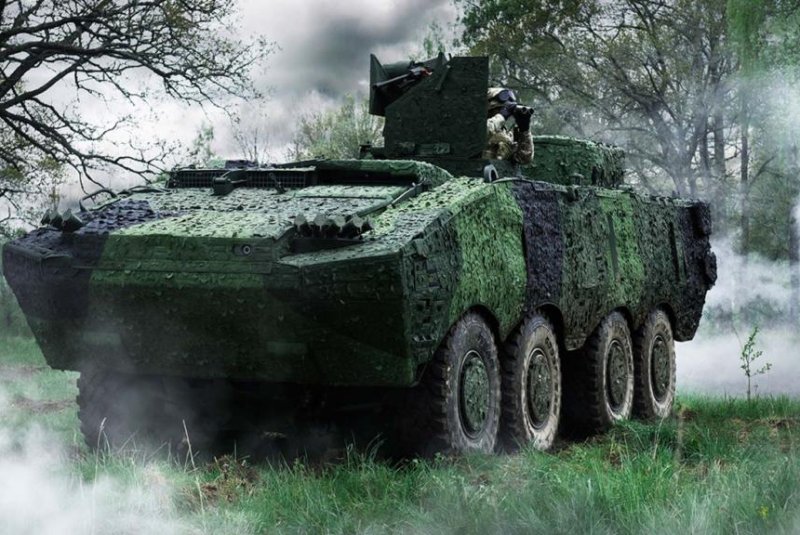
(Saab’s Barracuda camouflage system on an armoured vehicle)
Modern state of art Multi-spectral camouflage system offers a degree of protection against visual, IR and radar detection. Army should look to procure them in sufficient numbers from international partners and companies that are offering cost effective solutions.
(4) Deception. Deception misleads adversaries by manipulating, distorting, or falsifying friendly actions. Deception may be used to cause an enemy to waste munitions on false targets, deceive their combat assessment process, and falsely influence their decision makers by feeding their intelligence collectors what appears to be credible information. Deception may deny the enemy the ability to gain correct tactical, operational, and strategic information when using their reconnaissance and surveillance systems.(JP 3-01)
(5) Dispersal. Dispersal reduces target vulnerability by decreasing concentration making individual targets less lucrative. Combined with mobility and deception, dispersal increases enemy uncertainty as to whether a particular location is occupied and, if so, whether it will be occupied when the attack is executed.(JP 3-01)
Ability to fight dispersed effectively requires extensive training preparation and adaptation of Mission Command philosophy. Which army needs to accommodate within its training processes.
(6) Hardening and Redundancy.
(a) Hardening. Valuable assets and their shelters must be hardened to protect them against Air and Missile attacks.
(b) Redundancy. A principal means of preserving combat power is duplication of critical nodes, capabilities, and systems that are particularly vulnerable to air and missile attack and for which other passive measures may be less appropriate.(JP 3-01)
Notes–
1. REQUIREMENT OF LOMAD AND HIMAD MISSILE FOR BANGLADESH ARMY: SUITABLE OPTIONS FOR INDUCTION. (by Lieutenant Colonel Tanveer Ahmed, psc, G+) Mirpur Papers volume 28, Issue 32.
2. Bangladesh Army chief raises flags of 3 new artillery units, Dhaka Tribune.
3. NEWLY ADDITION IN BANGLADESH ARMY ORELIKON RADAR CONTROLLED GUN TEST FIRING HELD AT COXBAZAR, ISPR.
4. Bangladesh Army test-fires CS/AA3 anti-aircraft guns, Janes.
5. ES&T Redaktion (6 June 2024). “ILA 2024: „Close to 100% hit rate” für IRIS-T SLM”. esut.de (in German).
6. Story of Commander of Norwegian-American NASAMS. The Baron Unit destroyed over 250 Russian missiles & drones – United24
7.“Evaluation of Medium Range Surface to Air Missile System for Bangladesh Army” (PDF). DGDP.
8.তুরস্কের সঙ্গে সম্পর্ক তলানি থেকে শিখরে, আজকের পত্রিকা / সমরাস্ত্র-কেনাকাটায়-কৌশলী-বাংলাদেশ, সমকাল.
9. https://dgdp.gov.bd/dgdp/AP_TEN/notice/729.pdf
10. FPV drones are defining the battlefield, WavellRoom.
11. Azerbaijan-Armenia conflict: How Baku destroyed Russian S-300s with Israeli suicide drones, Middle East Eye.
12. Ukraine’s Lessons for Future Combat: Unmanned Aerial Systems and Deep Strike. USAWC Press.
13.“Indian air force orders Harop loitering munitions”. Flightglobal.com.
14. Gepard: “Predator” of the Ukrainian air defense, MILITARNYI.
15. MLRS and the Totality of the Battlefield, RUSI.
16. ENHANCEMENT OF AIR DEFENCE CAPABILITY OF BANGLADESH THROUGH UTILIZATION OF BANGABANDHU SATELLITE, Wing Commander M Mahfuzur Rahman, Engineering. Mirpur Papers, Volume 26, Issue 30.
17. Re-evaluation of Local Warning Radar (LWR) notice, DGDP.
18. Russia’s Electronic-Warfare Troops Knocked Out 90 Percent Of Ukraine’s Drones, Forbes.
19. Russian jamming leaves some high-tech U.S. weapons ineffective in Ukraine, The Washington Post.
20. https://www.congress.gov/118/meeting/house/116957/witnesses/HHRG-118-AS35-Wstate-PattD-20240313.pdf
21.https://mod.portal.gov.bd/sites/default/files/files/mod.portal.gov.bd/page/7afd70bc_7a61_41e6_9437_c38258a525e8/Air_Force.pd / https://www.latribune.fr/entreprise…es-radars-high-tech-au-bangladesh-852399.html
